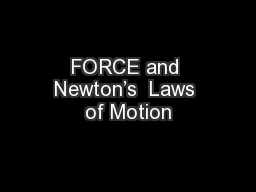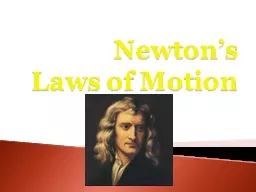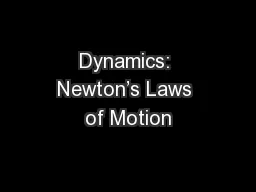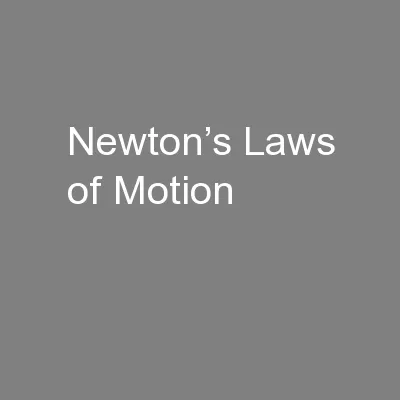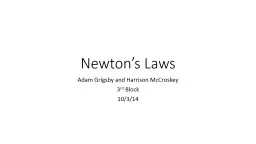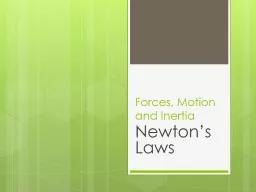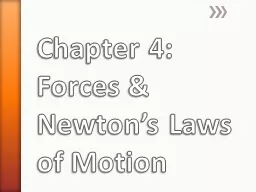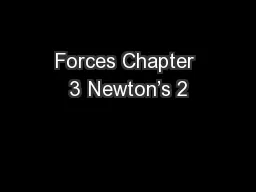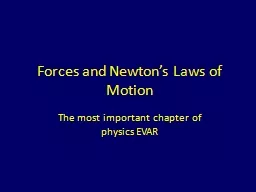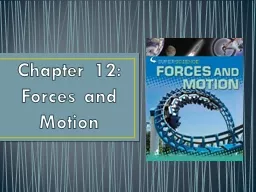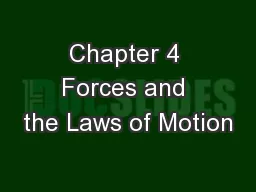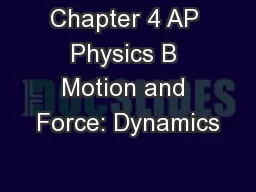PPT-FORCE and Newton’s Laws of Motion
Author : luanne-stotts | Published Date : 2018-03-10
Definitions of Force Force is a push or a pull acting on an object Force is a vector magnitude amp direction Force can be contact or long range aka noncontact
Presentation Embed Code
Download Presentation
Download Presentation The PPT/PDF document "FORCE and Newton’s Laws of Motion" is the property of its rightful owner. Permission is granted to download and print the materials on this website for personal, non-commercial use only, and to display it on your personal computer provided you do not modify the materials and that you retain all copyright notices contained in the materials. By downloading content from our website, you accept the terms of this agreement.
FORCE and Newton’s Laws of Motion: Transcript
Download Rules Of Document
"FORCE and Newton’s Laws of Motion"The content belongs to its owner. You may download and print it for personal use, without modification, and keep all copyright notices. By downloading, you agree to these terms.
Related Documents

